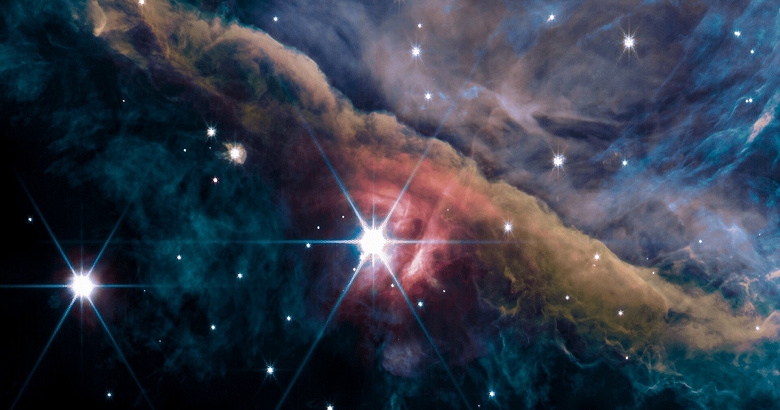Data from the James Webb Telescope show the water cycle in the protoplanetary disk
An international team of astrophysicists working as part of the PDRs4All Early Release Science program using observational data from the «James Webb» (JWST), discovered the phenomenon of destruction and re-formation of huge amounts of water in the protoplanetary disk located at the center of the Orion Nebula. This discovery was made possible through a combination of observations and calculations that combined the researchers' interdisciplinary approach.
According to PDRs4All program manager and Western Institute for Earth and Space Exploration lecturer Els Peters, they were able to determine that an entire ocean of water evaporates every month as a result of destruction in the protoplanetary disk, based on only a few observation pixels and concentrating on narrow spectroscopy data lines.
Most of the water present in the Earth's oceans was formed long before the emergence of the Solar System in the cold regions of interstellar space at extremely low temperatures of about -250°C. However, as a result of this research, it became clear that some of the water could be destroyed and re-formed at much higher temperatures of 100 – 500 ° C, when the young Solar system was a disk of gas and dust revolving around the Sun.
To study this process in detail, astronomers aimed JWST at d203-506, a protoplanetary disk located in the Orion Nebula. As a result of the study, it became clear that the intense ultraviolet radiation emitted by massive stars leads to the destruction and re-formation of water in d203-506, making it a real interstellar laboratory.
«This discovery cannot be said to be like finding a needle in a haystack. It's a needle in a haystack made of needles, — said Kami, professor of physics and astronomy and member of PDRs4All.
The results of the study demonstrate the important role of collaboration with quantum dynamics experts from the Madrid Deep Space Communications Facility and the Leiden Observatory. Thanks to their participation, it was possible to understand the processes of formation and destruction of molecules at a distance of more than 1000 light years.
When water is broken down by ultraviolet radiation, a hydroxyl molecule is released, accompanied by the emission of photons that reach the JWST telescope. As a result of the study, it was established that in a month the equivalent volume of water in the Earth's oceans is formed and destroyed in the protoplanetary disk d203-506.
However, the research does not end there. James Webb also provided evidence that hydroxyl, a key intermediate in the formation of water, is also formed from atomic oxygen. Likewise, some of the water in our oceans may have gone through a similar cycle.

